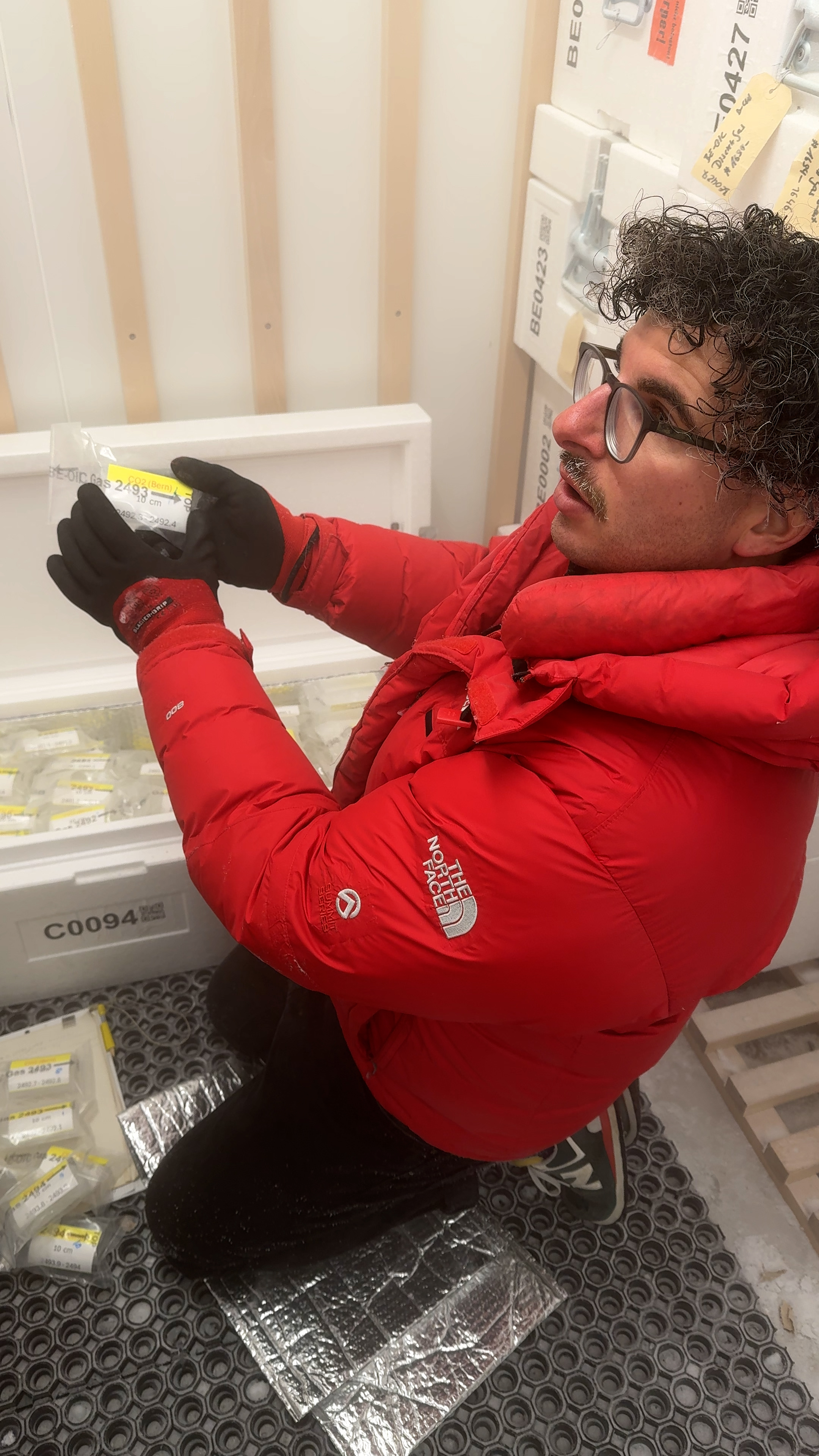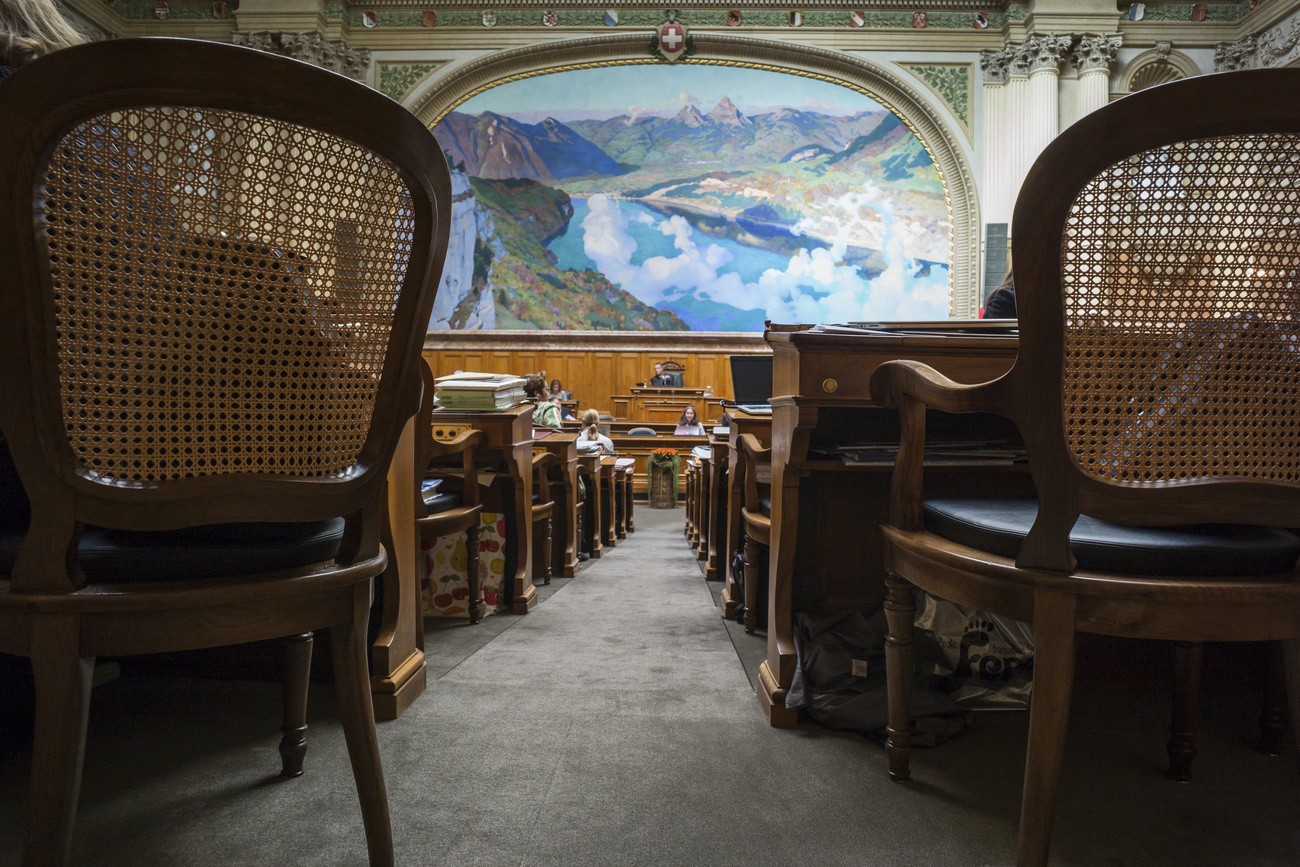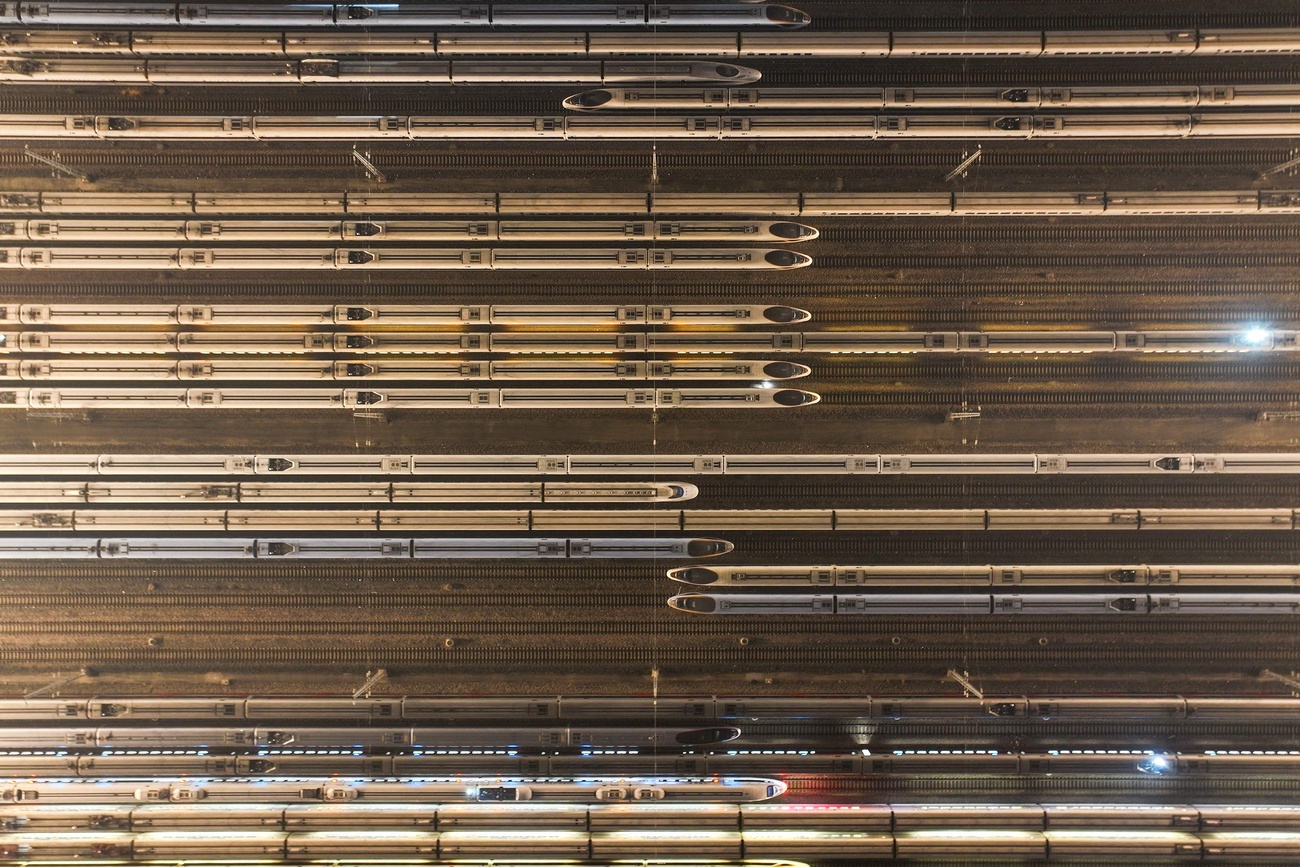
First fossils dug up at Bern train station

Fossilised snails, pieces of bone, teeth and jaw fragments have been discovered at a construction site in the Swiss capital’s main railway station.
During the construction of the new underground station of the Regional Transport Bern-Solothurn (RBS), rock layers have become accessible that would otherwise be hidden, the Natural History Museum Bern (NMBE) said on MondayExternal link.
This was a “unique opportunity” for the museum’s palaeontologists, it said. They are particularly interested in the Lower Freshwater Molasse, a rock layer that was formed about 20 million years ago, when Bern was subtropical.
The NMBE said construction projects such as the one in Bern were a stroke of luck when it came to researching the flora and fauna of that period. But “a keen eye is needed on the construction site to discover potentially fossiliferous rocks”, it added.

The collected rocks are broken up back at the museum and examined for fossil remains. Any fossils are then carefully freed from the rock. Only then can they be analysed in detail under a microscope and classified.
It has long been known that exciting finds are possible in the area. The first fossils came to light in 1850 when convicts were working with picks on the construction of the road to the Tiefenau quarter. Fossils were also found and recovered at the construction site of the Neufeld Tunnel between 2006 and 2008.
News

In compliance with the JTI standards
More: SWI swissinfo.ch certified by the Journalism Trust Initiative


































You can find an overview of ongoing debates with our journalists here . Please join us!
If you want to start a conversation about a topic raised in this article or want to report factual errors, email us at english@swissinfo.ch.